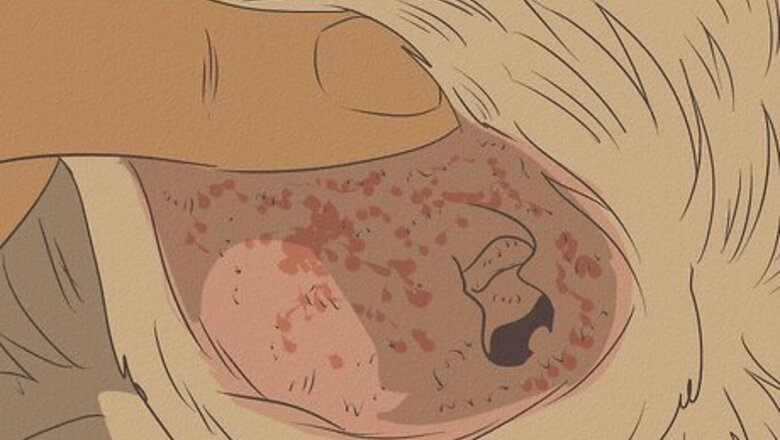
views
Observing the Symptoms
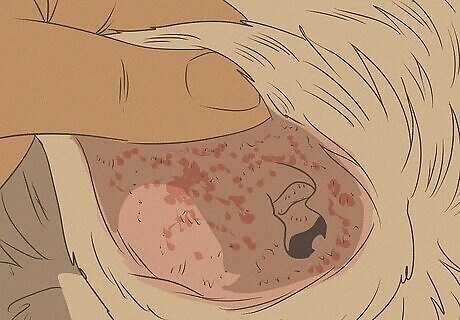
Figure out where the rash is located. Is your dog’s rash on one part of his body only? For example, under his belly or in his ears, or is it spread all over his body? For example, rashes on the back, around the tail, on his legs and/or around his abdomen are often (but not always) an indication of an allergic reaction. You should also look for hot spots, which are lesions on the dog’s skin, often caused by an allergy. The skin will be warm, moist, pink, and painful for your dog. These lesions are infected and need to be treated by a veterinarian.

Monitor your dog’s behavior. Is your dog lethargic, or is he behaving normally? Is he constantly biting, licking, or scratching the rash, or does he not seem to notice it? If the rash doesn’t seem to be bothering him, then it is unlikely to be caused by fleas or an allergic reaction. In this case especially, the rash may be caused by an underlying health issue that could be very dangerous. If the rash does seem to be bothering him, then it may be caused by fleas, ticks, or allergies, which will cause your dog to scratch constantly. It is important to understand that just because a rash doesn’t seem to be bothering your dog doesn’t mean it is ok to ignore it. A rash could be a sign of a more serious health condition.

Consider the time of year. Some rashes may be caused by heat, by fleas, or because the dog rubbed up against a plant that irritated his skin. If it is during the warm summer months, it is more likely that his rash was caused by one of these circumstances. If it is especially hot out, you should make sure that your dog has plenty of cool water to drink, and enough shade so that he can easily get out of the sun.

Contact your veterinarian. You can give your vet’s office a call to see if they might be able to assist you with your dog’s rash over the phone. If you can describe the rash and any other symptoms, your vet might be willing to give you some advice that way. If your vet isn’t sure, or doesn’t want to make any diagnoses without seeing the dog in his office, don’t press the issue! Take your dog into the vet so he can be checked out properly. A vet will cost you money, but many vets are more than willing to work out different payment options. In the end, taking your dog to the vet will save you and your dog time and suffering. If you try treating him yourself, you may end up wasting money on products that aren’t necessary anyway.
Diagnosing and Treating the Rash
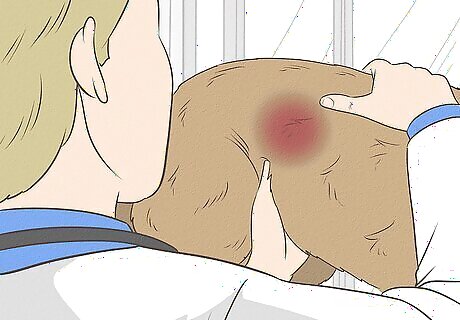
Take him to the vet. The best thing you can do to treat your dog’s rash is to visit your vet. Only your veterinarian can conduct the proper tests to determine the cause, and the correct course of treatment. If you are worried about the cost of a visit to the vet, then discuss different payment options with him/her. Many veterinarians will be happy to work out a payment plan with you.
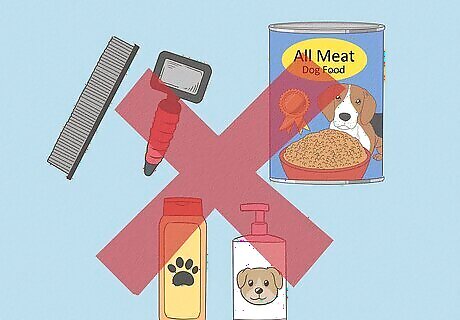
Consider an allergic reaction. A skin rash that is caused by an allergy is known as Allergic Dermatitis. If your dog is having an allergic reaction to something, such as his food, a grooming product, or something in the air, he may develop an itchy, red rash. Corticosteroids can help with itchy rashes, but it is more important to determine the allergen, and do your best to limit your dog's exposure to the allergen. Ask your veterinarian about allergy testing. Because there are many, many different sources of allergens, it will likely be difficult for you to determine the allergen on your own. A vet can help you systematically eliminate different allergens from your dog's diet and lifestyle.
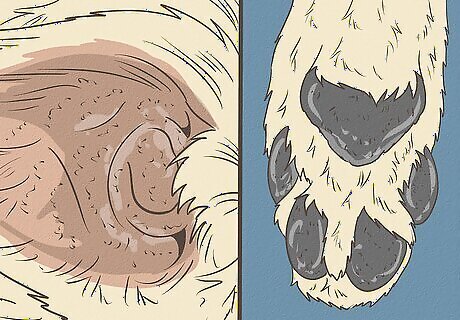
Look for signs of a yeast Infection. If your dog has a waxy-looking rash (or scabs) in his ears or around his paws that he licks or scratches continuously, then he may have a yeast infection. You will need to visit a vet in order to have this diagnosed accurately. Fortunately, this type of infection is usually treated easily with a cream you apply to the skin. It is very important that you have a yeast infection treated properly, as untreated infections in the ear can lead to deafness. Adding acidophilus to your dog’s diet may be helpful in preventing these infections, if your dog is prone to them. Acidophilus is a probiotic bacteria that is important for a balanced gastrointestinal tract. You can give this to your dog by adding plain, unsweetened yogurt or an acidophilus supplement directly to your dog’s food.
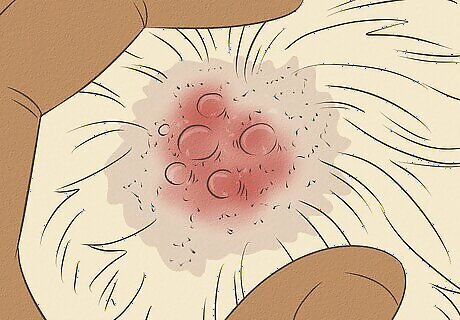
Look for sores, bumps, and scabs. Folliculitis is a rash caused by a bacterial infection, which will often consist of sores, bumps, and/or scabs. If you have a longer haired dog, these bumps may be difficult to see, so check carefully. You may also notice that the dog’s coat is dull and that he is shedding more than usual. If you believe your dog is suffering from folliculitis, you will need to visit the vet as this infection can usually only be treated with antibiotics.
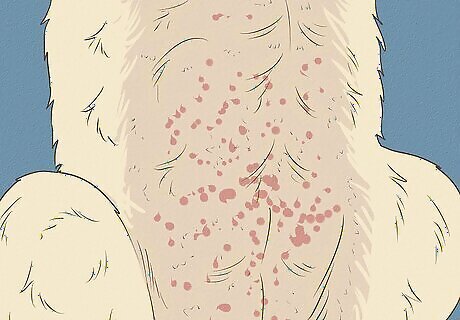
Examine your dog’s belly. If you find pus-filled blisters on the area of skin where there is less fur, your dog may be suffering from impetigo. This type of bacterial infection is most common in puppies. These blisters typically appear on the abdomen, where there is less hair, and they may break and crust over. A topical solution can usually treat this affliction, but if left untreated, it may spread.
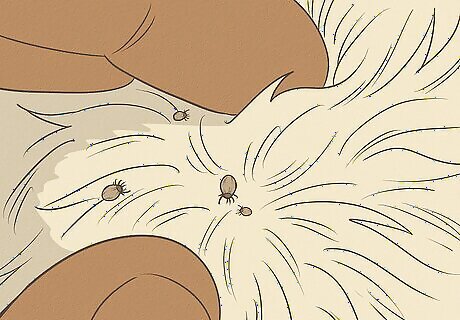
Search for fleas. This is one of the most common reasons that your dog might develop a rash. The saliva in a flea’s bite can irritate the skin, and cause rashes. Not to mention that an untreated flea problem can quickly turn into an infestation. If you believe your dog is suffering from fleas, try giving him a flea bath. Your veterinarian can recommend a good product to mix with water and apply to the skin. You can also find them at high quality pet supply stores. Bathing your dog with a flea killing soap can help alleviate skin irritation, and will kill some of the fleas, but understand that this will only be a temporary solution. You will have to take further steps to get rid of your dog’s flea problem.
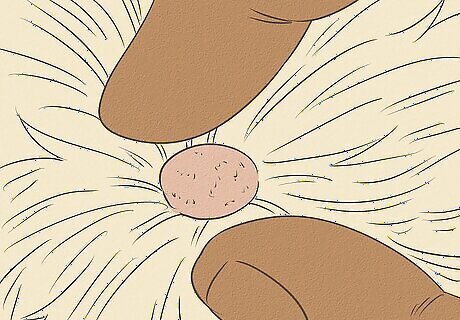
Look for bumps under the skin. If you find a knot or bump under the skin, take your dog to the vet. Your dog may or may not scratch at these types of bumps, so you should periodically check for them using your fingers. A bump under the skin might indicate a cancerous tumor, so it should be biopsied by a vet in order to rule anything out.
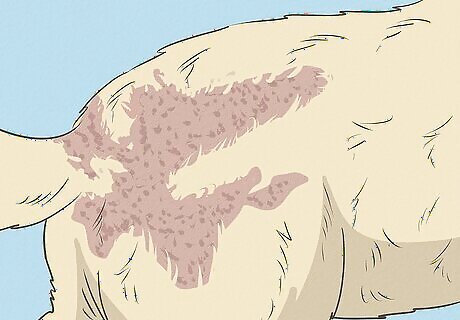
Rule out mange. There are two types of mange that might be causing skin problems for your dog. It is important to rule out each type as these will not go away on their own. Sarcoptic mange is caused by an infestation of a parasitic mite. These mites burrow into the skin where they hatch eggs, and then come to live on the top of the skin. They prefer areas of the body that have little hair, such as the stomach or under the ear flaps. These mites are very irritating and itchy, and may cause red scaly skin. Be aware that this type of mange is contagious to other dogs and humans, so you should see your vet right away if you think this might be the cause. Demodectic mange is also caused by mites, but these mites are naturally found on many dogs. The mites usually only cause a problem if the dog’s immune system is not functioning properly, so it is important to get your dog checked out for any other underlying problems. This type of mange usually presents as scaly bald patches around the eyes and/or mouth. It is slightly contagious between dogs, but humans cannot contract it.
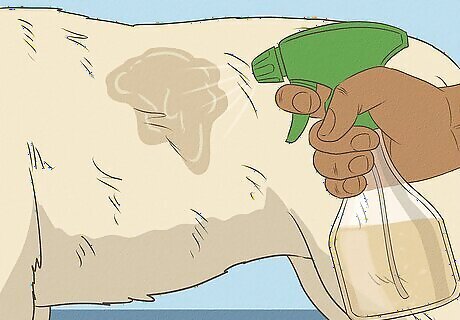
Spray chamomile tea onto the skin. Chamomile tea can be good for soothing irritated skin. If you think that your dog may have simply run into an irritating plant, you can try this by brewing some chamomile tea, letting it cool in the fridge, and then spraying it directly onto the skin. If the rash feels warm, and it is also during a hot day, placing the tea in the fridge may provide extra comfort for your dog.
Caring For Your Dog’s Sensitive Skin
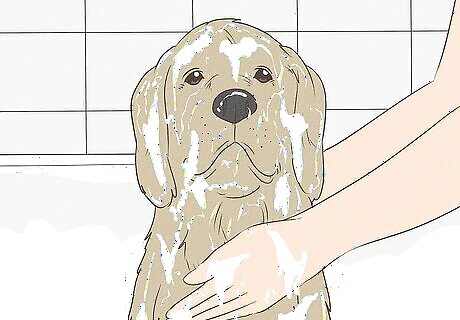
Bathe your dog. A bath may help with several types of rashes, especially if he hasn’t had one in quite awhile. If your dog is suffering from fleas or has a rash caused by some kind of skin irritant, a bath can help soothe the skin. There are several different kinds of baths you can give your dog, but if you have determined that your dog’s skin is sensitive, an oatmeal bath can be great for providing relief. You can make your dog an oatmeal bath by grinding up some oatmeal in a food processor and adding it to some water (how much oatmeal you need depends on the size of your dog, but you will want to use enough so that it creates a very diluted, runny mush). Then let your dog soak in this mixture, which will work well against itchiness. Be sure to rinse all of the oatmeal off of your dog when he is done soaking. It is also possible to buy oatmeal shampoos at your local pet store. These are meant to work in the same way, but come pre-made for your convenience.
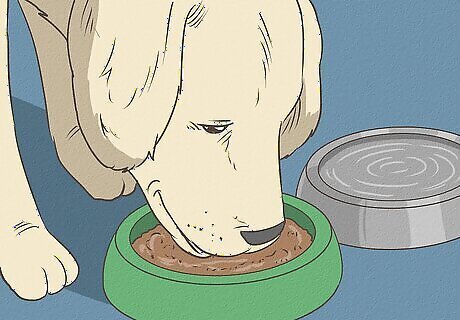
Examine his eating habits. Does your dog only eat the food you give him or does he often get scraps from the table? Are you feeding him high quality dog food, or are you purchasing whatever food is on sale? Having a healthy, balanced diet can play a huge role in your dog’s health, and that includes the health of his skin. Choose a food that has a protein on the label first, instead of a carbohydrate. The food should also list essential fatty acids on the label. You can also consider purchasing an essential fatty acid supplement that you can add to his food. For healthy skin, omega 6 fatty acids are essential. These include: linoleic acid, gamma linolenic acid, and arachidonic acid. You can also add evening primrose oil to his food. Make sure that your dog always has a bowl of clean, fresh water to drink! It is important that you change his water out each day.
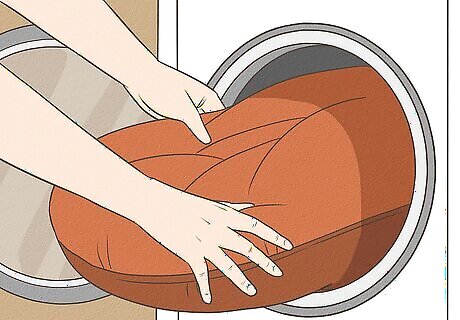
Wash your dog’s bedding. You should keep his bedding clean by washing it in hot soapy water, especially if you have discovered fleas. Most beds will have a tag for cleaning instructions, so follow them carefully. Dry it thoroughly by either hanging it to dry or putting it in the dryer, if the tags says it is acceptable. If your dog spends time inside, you should also make sure that you vacuum your rugs every two to three days to get rid of anything that might be harmful or irritating. Keeping his bedding clean can also be helpful in getting rid of rashes because it may be something in the bedding itself that has irritated his skin in the first place.

Rub vitamin E on your dogs skin. If your dog is prone to dry, flaky, itchy skin, try massaging vitamin E oil into his skin. You can also add the oil to his bath water to help moisturize. It may also be possible to give your dog vitamin E oil orally, but you should check with your vet before doing this in order to determine the correct dosage. You may also be able to add the oil directly to his food.




















Comments
0 comment